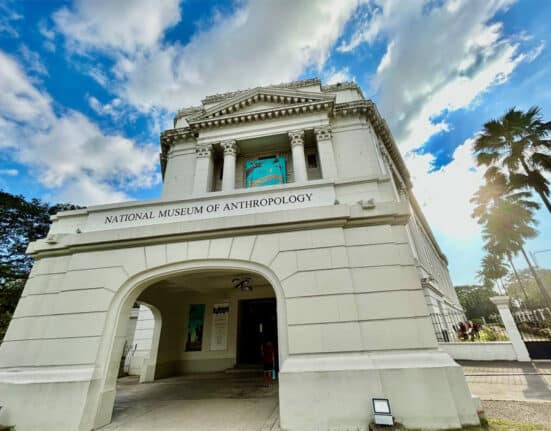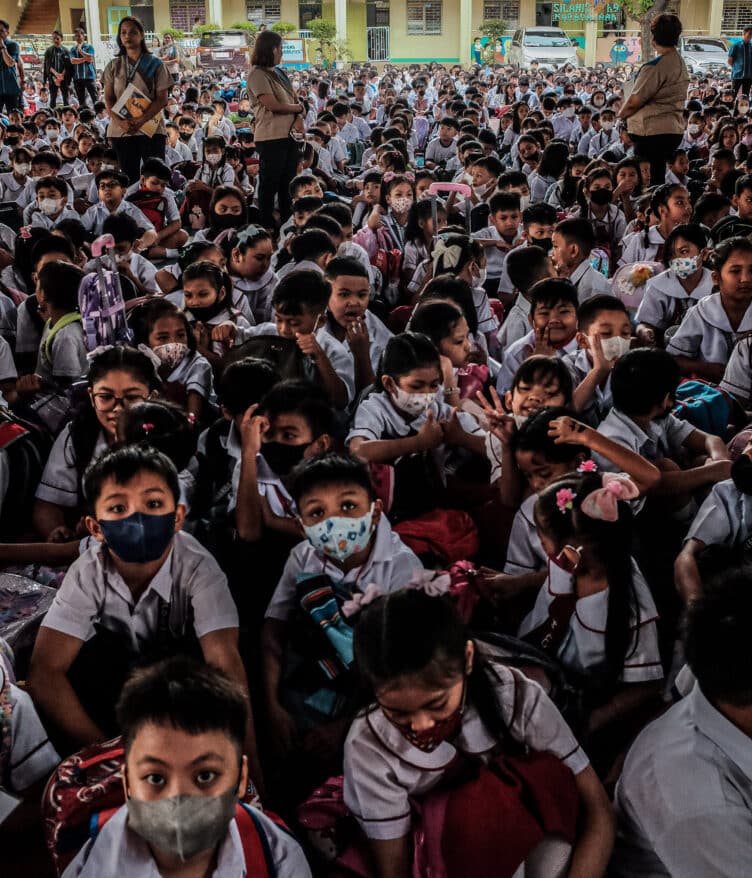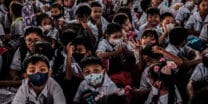WANDER and at the same time wonder with thousands of artifacts inside the National Museum of Anthropology.
But here’s the catch, you can also witness the towering and out of the box exhibit of Kidlat Tahimik, one of the country’s national artists.
The National Museum of Anthropology is one of the four flagship museums of the National Museum of the Philippines, including the National Museum of Natural History, Fine Arts, and the National Planetarium, which was decommissioned in 2021.
Both the anthropology and archaeology sections of the National Museum of the Philippines are headquartered under the National Museum of Anthropology. The Museum of the Filipino People was once the name of this building.
Antonio Toledo was the architect that came up with the design for the structure in 1940. The National Museum now occupies the building which was formerly home to the Department of Commerce and the Department of Finance. In the 1990s, the building was transferred to the National Museum, the National Museum archives showed.
Toledo was also tasked with the construction of several other well-known buildings in the city of Manila, such as the Manila City Hall, the Bureau of Customs Building, and the Department of Tourism Building.
According to records, over 10,000 artifacts and other items are housed in the National Museum of Anthropology.
Five floors of Filipino Heritage
The building exhibits Philippine textiles, indigenous products, ethnographic and terrestrial and underwater archaeological collections, which altogether tell the story of the Philippines’ pre-historic past through artifacts that document the evolution of human life and civilization in the archipelago in its five-floor building.
SUGGESTED STORIES:
When to avoid intermittent fasting
Warning: This article contains discussions of eating disorders and body.
From sidewalks to spotlight: BUM Black Army unveils new streetwear collection
True to its commitment to celebrating the youth spirit through.
Marcos amenable to return school opening to June
PRESIDENT Ferdinand R. Marcos Jr. said that he is hoping.
Here’s a quick guide to what’s inside the National Museum of Anthropology:
Ground floor
- Ifugao House / Courtyard
- Office of the Exhibition, Editorial, and Media Production Services Division
- Office of the Museum Foundation of the Philippines
- Office of the Archaeology Division
- Office of the Ethnology Division
- Office of the Maritime and Underwater Cultural Heritage Division
- National Museum Library
Second Floor
- Marble Hall
- The San Diego: 500 Years of Maritime Trade
- Garing: The Philippines at the Crossroads of Ivory Trade
Third Floor
- Lantaka: Of War and Peace
- Manlilikha ng Bayan Hall (National Living Treasure)
- Lumad: Mindanao
- Faith, Tradition, and Place: Bangsamoro Art from the National Ethnographic Collection
- Kaban ng Lahi (Archaeological Treasures)
- Biyay: Traditional Ecological Knowledge among Philippine Negrito Communities
Fourth Floor
- Reception Hall (Changing Gallery)
- Rice, Biodiversity, and Climate Change
- Hibla ng Lahing Filipino: The Artistry of Philippine Textiles
- Baybayin: Ancient and Traditional Scripts of the Philippines
- Entwined Spheres: Mats and Baskets as Containers, Costumes, and Conveyors
- Office of the Museum Services Division
Fifth floor
National Ethnographic Collection Repositories
Exhibit
The first thing museum-goers will see upon entering the museum is the Madrid Expo, which is part of the National Artist Eric Oteyza De Guia, also known as Kidlat Tahimik’s exhibit titled Indio-Genius: 500 Taon ng Labanang Kultural. The exhibition illustrates the struggles of the ancient Filipinos during the Spanish colonial period in the country.
Kidlat’s work varies from video and photography to weaving, free-style architecture, and carving installations. He is known as the Godfather of the Filipino New Wave because of his influence on the cultural movement.
National Living Treasures
Aside from artifacts and cultural objects from various Filipino cultures across the three major islands, the National Museum of Anthropology honors the “Manlilikha ng Bayan,” or the National Living Treasures that keep the Filipino heritage alive.
A Manlilikha ng Bayan is an individual or group of Filipino citizens who partake in any traditional art form that expresses originality and artistic aspects that are specifically Filipino and is produced for ornamental, practical, and societal purposes. They possess highly developed technical and artistic abilities, which they have passed on to the current generation and who are widely employed in their respective communities with the same level of technical and creative power.
Free admission
Visiting the National Museum of Anthropology is free of charge. Here are the requirements needed in order to enter the halls of the museum without paying a dime
- Adults: valid identification and vaccination card
- Children: must be accompanied by adults with a valid ID and proof of vaccination
Currently, only vaccinated museum-goers are allowed to enter the building. Food and drinks are not allowed inside, as per the museum regulations.
Take note:
Museum-goers can take photos inside the premises of the building, but recording videos and taking pictures with a flash are strictly prohibited as they may damage the centuries-old objects inside the museum.












